-
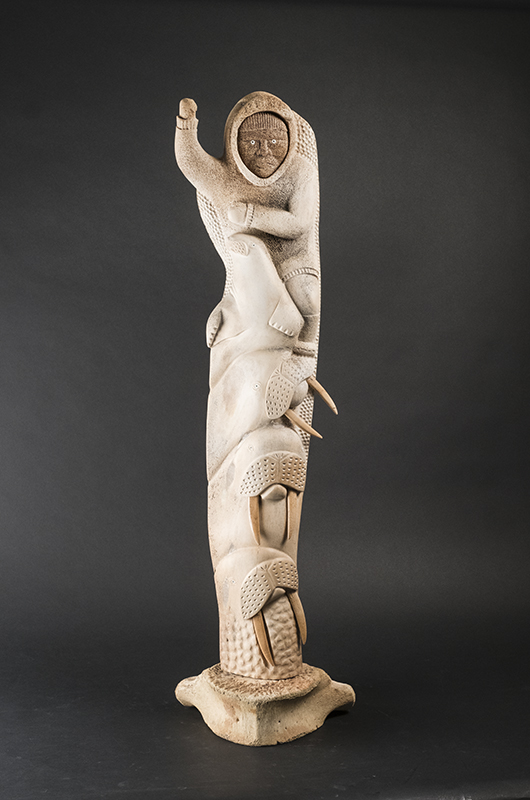 Dancing the HuntedWhalebone
Dancing the HuntedWhalebone- 35.25"h
- 10.5"w
- 11"d
SOLD -
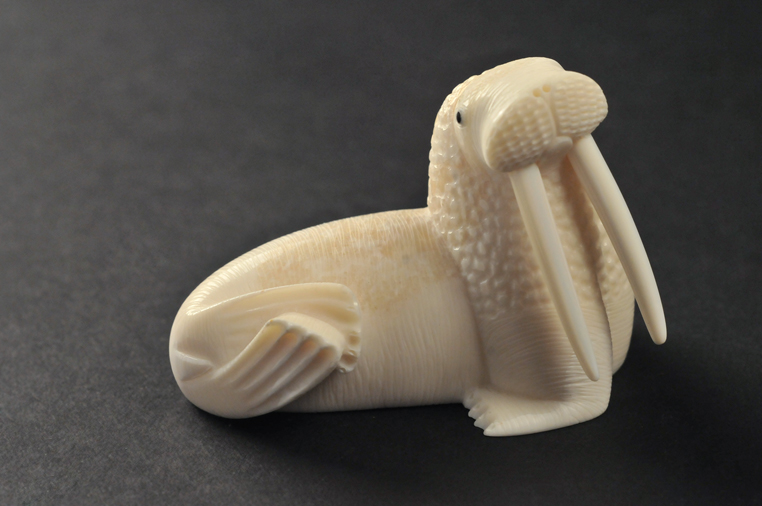 Bull WalrusIvory, Baleen
Bull WalrusIvory, Baleen- 1.88"h
- 3.25"w
- 1.63"d
SOLD -
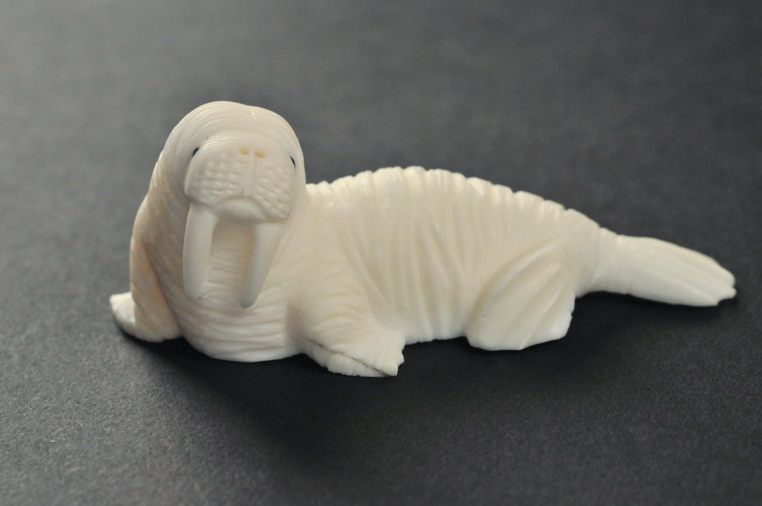 Small WalrusIvory, Baleen
Small WalrusIvory, Baleen- .88"h
- 2.88"w
- .75"d
SOLD -
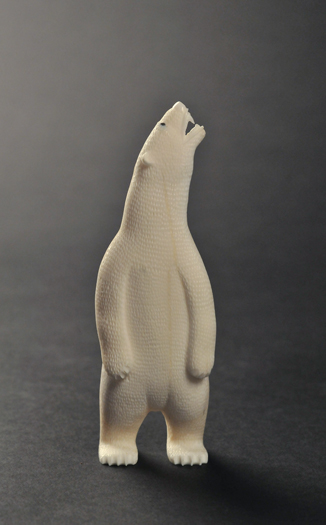 Ivory Standing BearIvory, Baleen
Ivory Standing BearIvory, Baleen- 4.75"h
- 1.5"w
- .75"d
SOLD -
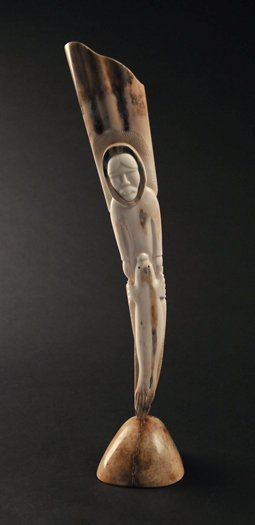 Shamanic Figure Holding SealUnderwater Ivory, Old Walrus Jawbone
Shamanic Figure Holding SealUnderwater Ivory, Old Walrus Jawbone- 14.50"h
- 3"w
- 3"d
SOLD -
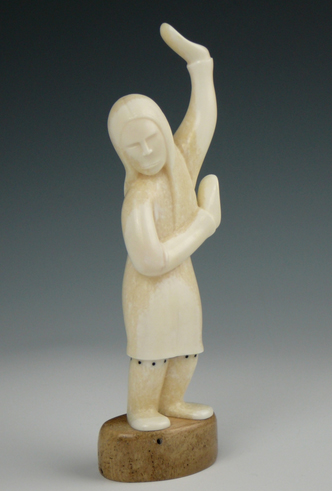 Woman DancerWalrus Ivory, Baleen inlay, Walrus Jawbone Base
Woman DancerWalrus Ivory, Baleen inlay, Walrus Jawbone Base- 7"h
- 2.5"w
- 1.5"d
SOLD -
 Hunter with Bow & ArrowWalrus Ivory, Fossil Walrus Ivory, Baleen, Leather
Hunter with Bow & ArrowWalrus Ivory, Fossil Walrus Ivory, Baleen, Leather- 9.5"h
- 4"w
- 1.75"d
SOLD -
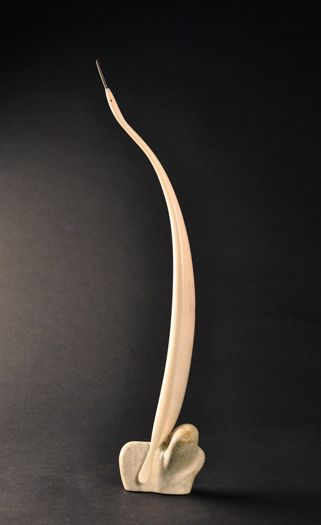 Medium Cormorant on Jawbone BaseIvory, Baleen, Walrus Jawbone
Medium Cormorant on Jawbone BaseIvory, Baleen, Walrus Jawbone- 20.13"h
- 4"w
- 3.88"d
SOLD -
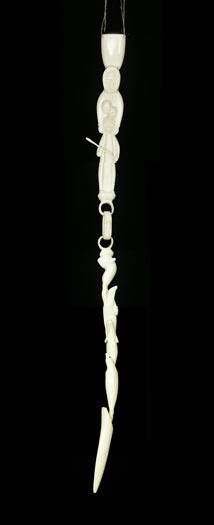 Chain Link Ivory TotemIvory, Baleen, Sold with Wall Mount
Chain Link Ivory TotemIvory, Baleen, Sold with Wall Mount- 35"h
- 2"w
- 2"d
SOLD -
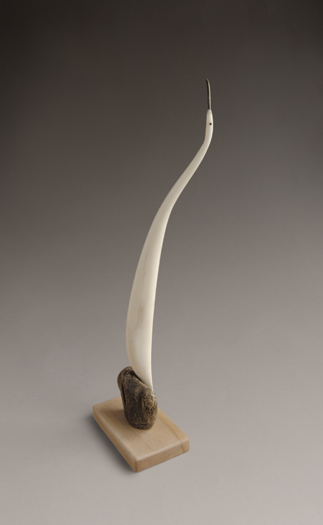 CormorantIvory, Baleen, Fossilized WhaleboneSOLD
CormorantIvory, Baleen, Fossilized WhaleboneSOLD -
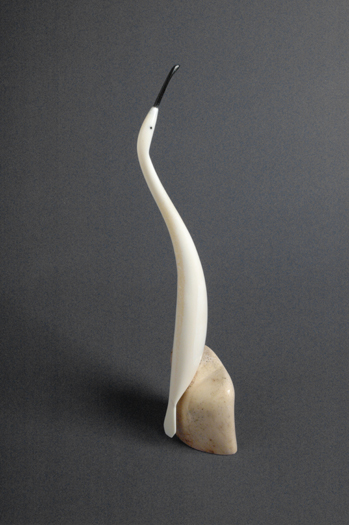 Medium CormorantIvory, Baleen, Walrus Skull Bone
Medium CormorantIvory, Baleen, Walrus Skull Bone- 11.5"h
- 2.75"w
- 2"d
SOLD -
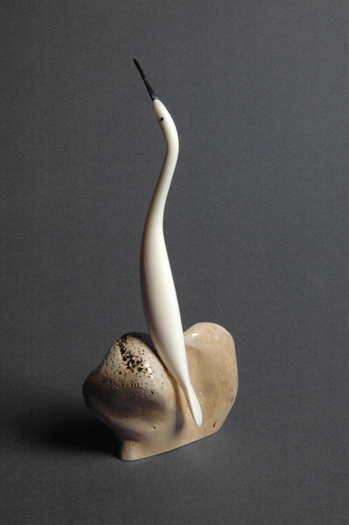 Small Cormorant on Skull Bone BaseIvory, Baleen, Bone
Small Cormorant on Skull Bone BaseIvory, Baleen, Bone- 7.25"h
- 3"w
- .75"d
SOLD -
Large BelugaPolished Walrus Ivory, Walrus Skull Base, Baleen Eyes
- 3.25"h
- 4.25"w
- 2"d
SOLD -
Seal on RockPolished Walrus Ivory, Walrus Skull Base
- 2.5"h
- 4"w
- 3.5"d
SOLD -
Ivory Kayak with Baleen Spear and PaddleIvory, Baleen
- 8"h
- 3"w
- 2"d
SOLD -
 Woman EagleWalrus Tusk Ivory, Fossilized Seal Vertebrae
Woman EagleWalrus Tusk Ivory, Fossilized Seal Vertebrae- 15.25"h
- 3"w
- 1"d
SOLD -
 Bear Seal SceneIvory, Fossilized Whalebone
Bear Seal SceneIvory, Fossilized Whalebone- 12.25"h
- 4"w
- 4.25"d
SOLD -
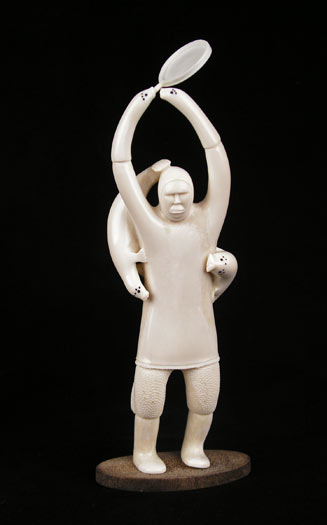 Drummer with SealsWalrus Tusk Ivory, Baleen, Fossilized Whale Bone
Drummer with SealsWalrus Tusk Ivory, Baleen, Fossilized Whale Bone- 9.5"h
- 4"w
- 2"d
SOLD -
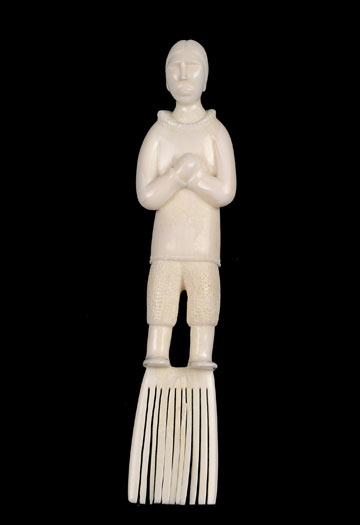 Solemn Man CombFossilized Walrus Ivory, Sold on Stand
Solemn Man CombFossilized Walrus Ivory, Sold on Stand- 7.7"h
- 1.5"w
- 1"d
SOLD
Edwin Nunguk was born July 29th, 1975 in Savoonga. He learned carving from the village elders, especially the use of tools. He enjoys both bone and ivory carvings, but is particularly skilled in ivory. He is a versatile carver, exploring many subjects from polar bears to walruses, but it in is his figures that he captures the core activities of the Yup’ik culture. His dancers, hunters and fisherman are done in his signature simple yet expressive technique. The subtlety in this work is especially graceful and poignant as he takes traditional activities and materials and transforms them into pieces that are saturated with his culture, yet are distinctly true pieces of contemporary art.
Edwin’s last name was previously spelled Nungwuk and Noongwook. Noongwook, however, is the missionary spelling of the Yup’ik name. Once the Yup’ik people developed their own spellings to better represent the pronunciation, it was changed to Nunguk.
St. Lawrence Island, or Sivuqaq in Siberian Yup’ik, lies in the northern reaches of the Bering Sea, 164 miles west of Nome. There are two communities on the Island, Savoonga and Gambell. Savoonga is on the northern coast and has about 700 residents while Gambell lies on the northwest cape with about 600 residents. St. Lawrence Island is thought to be one of the last above-water remnants of a land bridge connecting the new and old worlds that once allowed migrating peoples from Asia to enter North America. The people of St. Lawrence Island share lineage and a Siberian Yup’ik common language with their Russian neighbors on the opposite side of the Bering Strait. Most residents of St. Lawrence Island are bilingual. In fact, many of the older generation speak Siberian Yup’ik as their first language, although with each generation English is becoming more prominent.
Subsistence hunting is a way of life on St. Lawrence Island. Each spring and fall crews set out to sea in search of seal, walrus and whale. While modern implements and technology have in many ways changed subsistence hunting, the principles behind and importance of the hunt remain unchanged. In addition to hunting, gathering greens, picking berries and scouring for bird eggs are a part of everyday life on the island. Subsistence life on St. Lawrence Island is an example of true sustainable living, with every part of the animal being used- the meat and fat for food, skin for clothing and the walrus tusk for carving – just to name a few.
Siberian Yup’ik artists create some of the most exquisite carvings in ivory and whalebone. Traditional subjects include the animals that are a vital part of life on the island, such as whale, walrus and seal, as well as scenes depicting hunting, gathering and family. In addition to these more traditional subjects, contemporary pieces in ivory and whalebone are emerging. The common link found throughout Siberian Yup’ik art are the connected relationships among men, animals and the environment.
